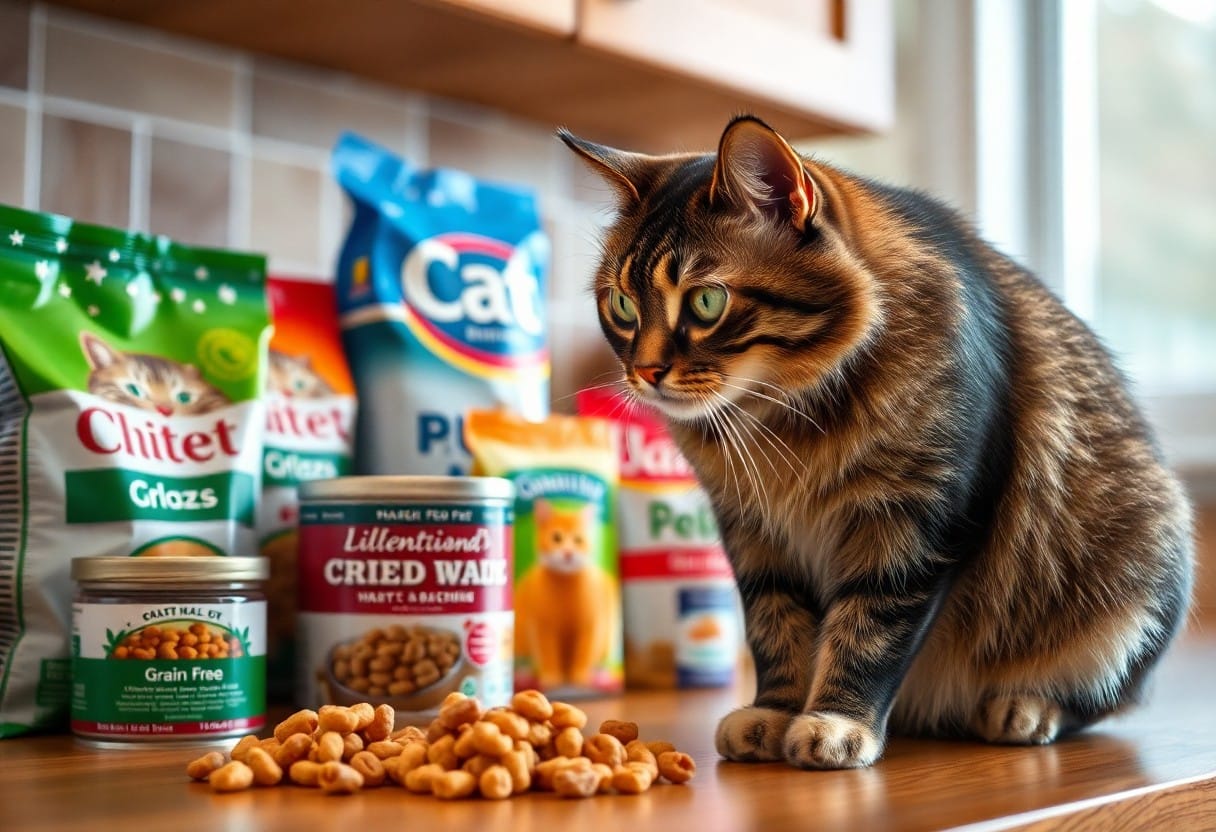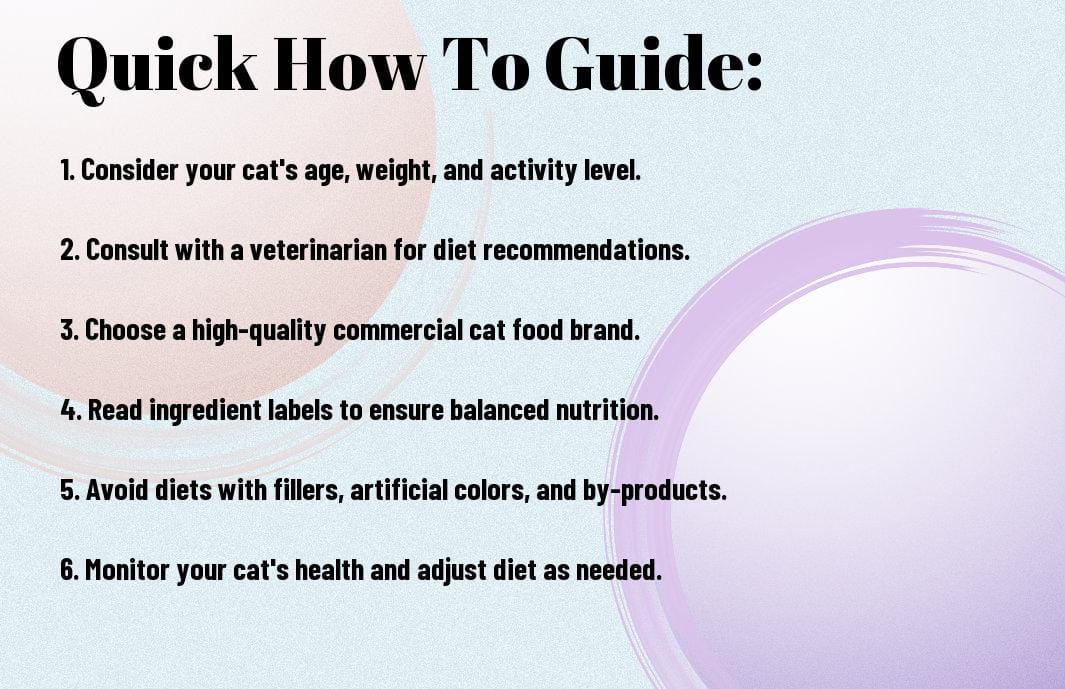Food is a pivotal part of your cat’s health, so choosing the right cat food brand tailored to specific needs is important. With many options available, you may feel overwhelmed, but by focusing on ingredients, nutritional value, and life stage, you can make informed decisions. Understanding your cat’s unique requirements, whether they have allergies, sensitivities, or health issues, will allow you to provide optimal nutrition. This guide will highlight critical steps to ensure your furry friend gets the best possible diet for a happy and healthy life.
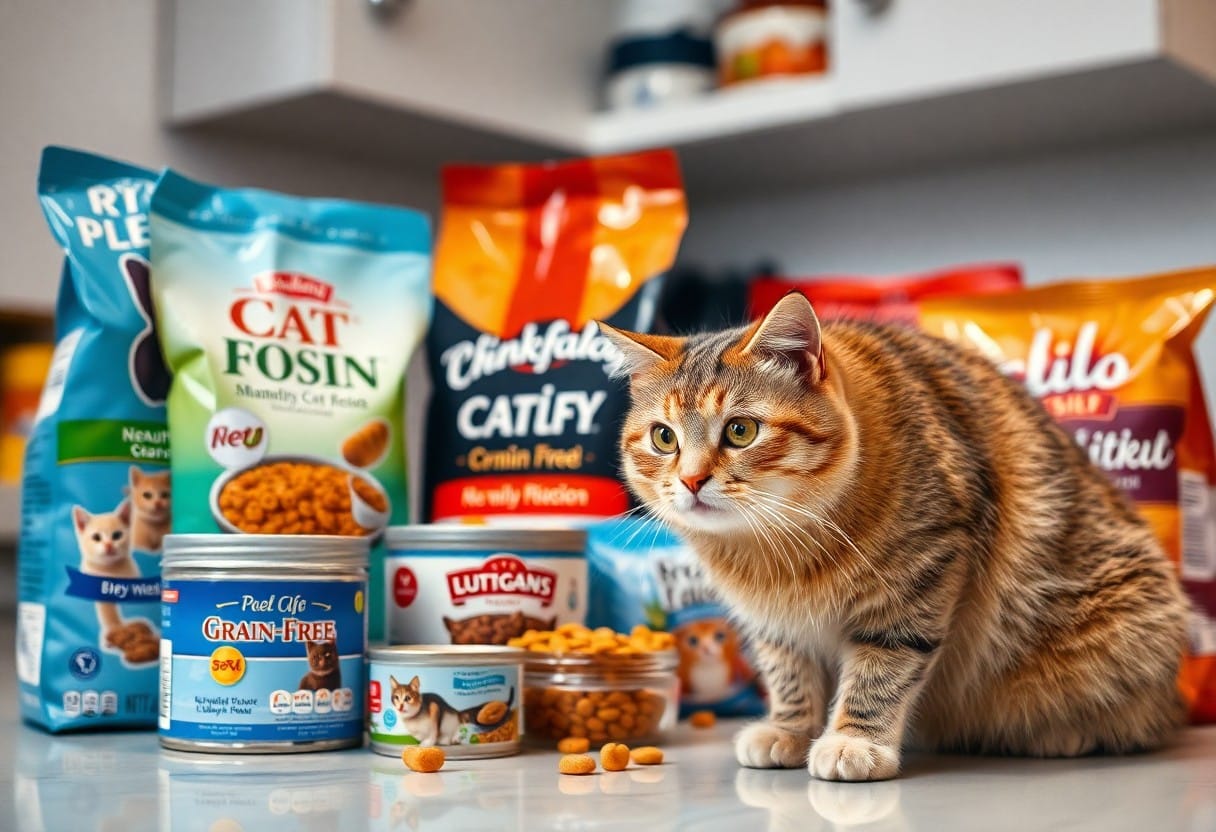
Key Takeaways:
- Assess your cat’s specific dietary needs based on their age, health conditions, and activity level to select an appropriate food brand.
- Look for high-quality ingredients and nutritional balance in the cat food to ensure it meets your feline’s requirements.
- Consult with your veterinarian for recommendations tailored to your cat’s individual needs and to discuss any food allergies or sensitivities.
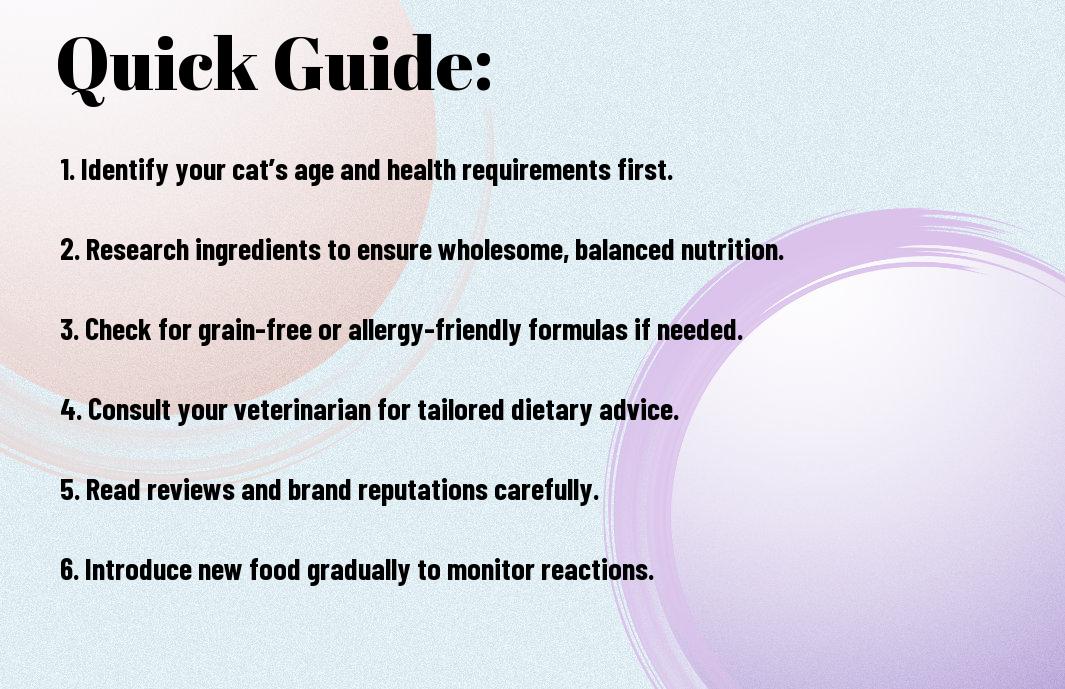
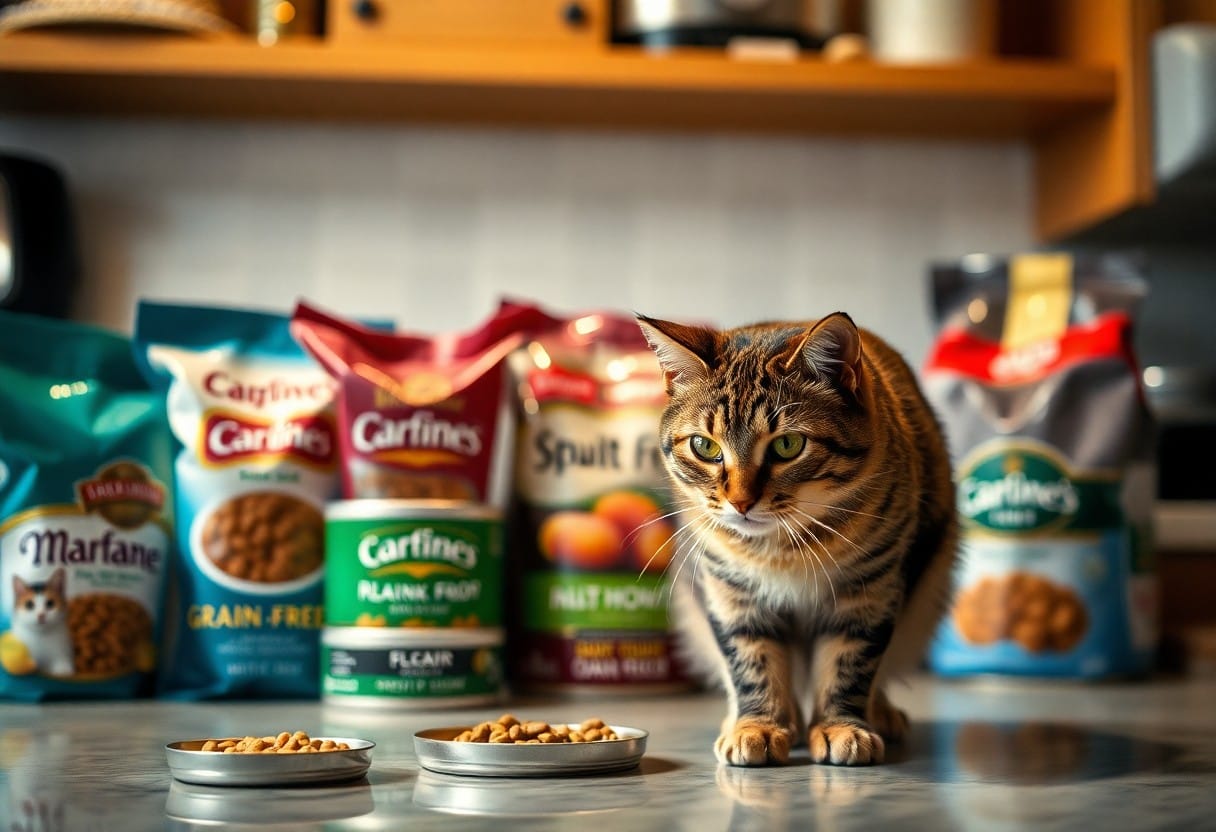
Understanding Different Types of Cat Food
A variety of cat food options are available to cater to your feline’s specific needs. Choosing the right one can significantly impact your cat’s health. Consider the following types:
| Type | Description |
| Dry Cat Food | Easy to store and can help maintain dental health. |
| Wet Cat Food | Higher moisture content, beneficial for hydration. |
| Raw Diet | Includes raw meats, must be handled carefully. |
| Homemade Diet | Allows for ingredient control, but requires research. |
| Specialty Diets | Formulated for specific health conditions. |
Knowing which food type suits your cat can lead to better health outcomes.
Dry Cat Food
On the whole, dry cat food is a popular choice due to its convenience and affordability. It generally contains a balanced mix of proteins, fats, and carbohydrates. The low moisture content can contribute to dental health by reducing tartar buildup. However, ensure your cat drinks enough water, as hydration remains vital.
Wet Cat Food
One of the primary benefits of wet cat food is its higher moisture content, which aids in your cat’s hydration. It generally contains more protein and fat than dry food, making it a palatable option for picky eaters. While it can be more expensive than dry food, its nutritional benefits may justify the cost.
A diet heavy in wet cat food can be advantageous, especially for cats with urinary or kidney issues, as the added moisture helps support proper kidney function. The rich flavor often entices cats reluctant to eat, making it an excellent option if your feline is recovering from illness or surgery. Just be sure to monitor portion sizes to prevent overfeeding.
Raw and Homemade Diets
Little do many owners know that raw and homemade diets can offer tailored nutrition for your cat. These diets emphasize whole ingredients, providing natural sources of protein and nutrients. However, it’s important to ensure the recipes are balanced and safe, as improper handling or composition can lead to health issues.
Different factors play a role in the success of raw and homemade diets. Consider your cat’s size, activity level, and any specific health conditions. Consulting with a veterinarian or pet nutritionist can help you formulate a safe and balanced diet plan. Be cautious, as contaminated raw meat can pose risks to both your cat and household members. Provide the right nutrients, and monitor your cat’s health closely to gauge the diet’s effectiveness and make adjustments as necessary.
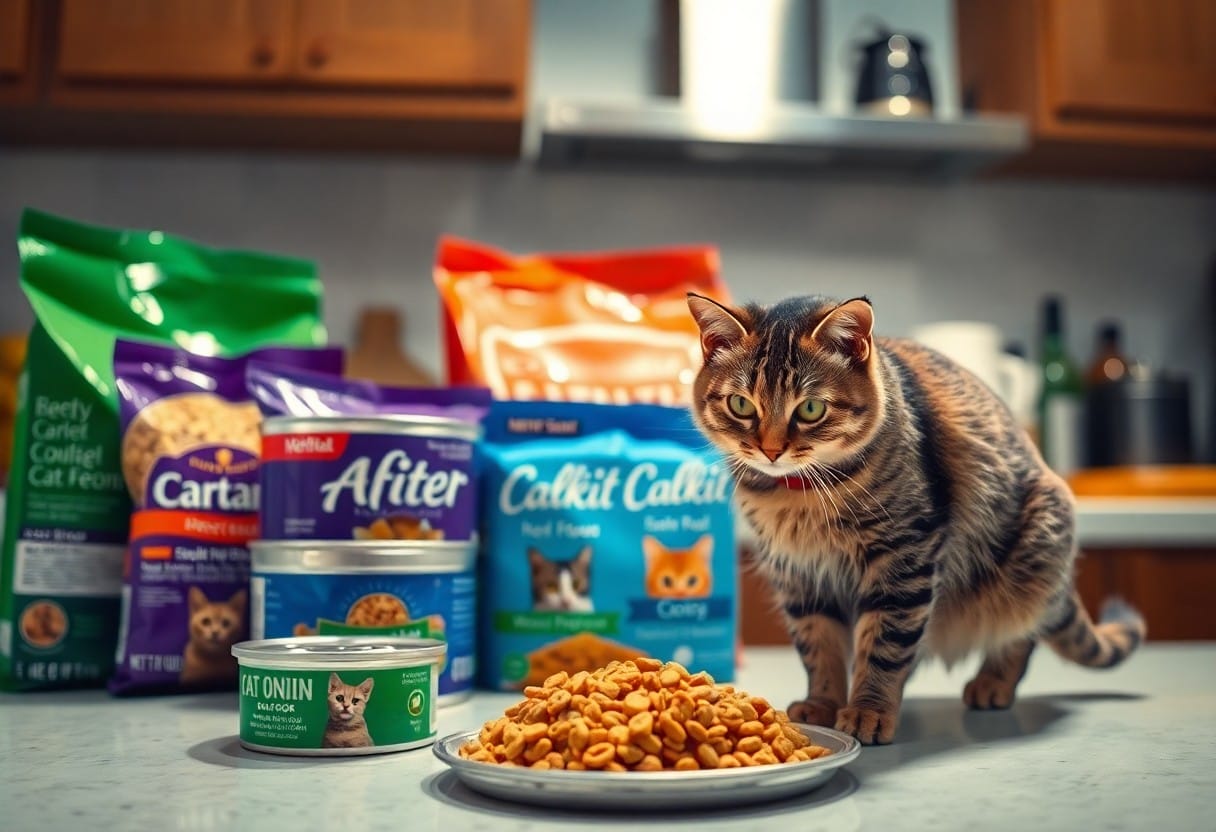
Step-by-Step Guide to Selecting the Right Brand
Once again, navigating the world of cat food can be overwhelming, but following a structured approach can simplify your decision-making. By breaking down the process into clear steps, you can ensure that you choose a brand that meets your cat’s specific needs. Below is a table outlining the imperative stages in selecting a cat food brand:
| Step | Description |
|---|---|
| 1. Research Ingredients | Examine the quality and source of ingredients in the cat food. |
| 2. Evaluate Brand Reputation | Look into the brand’s history, safety records, and customer feedback. |
Researching Ingredients
Little attention to the ingredients in your cat’s food can lead to serious health issues. Always prioritize high-quality protein sources, healthy fats, and imperative vitamins. Look for brands that use natural ingredients without artificial additives, as these contribute to your cat’s overall well-being and vitality.
Evaluating Brand Reputation
While assessing a brand’s reputation, consider its track record in the pet food industry. Seek out brands with a strong history of reliable safety standards and positive customer experiences. Research recall histories, as higher recall rates can indicate manufacturing flaws or potential hazards in their products.
With a thorough evaluation, you can identify brands that have cultivated a trustworthy image in the market. Look for those that provide transparent information about their sourcing practices and ingredient quality. Brands that engage with customers and show genuine concern for pet health through community involvement and educational resources often inspire more confidence. This way, you can feel secure knowing that you’re choosing a brand that prioritizes your cat’s health and well-being.
Pros and Cons of Popular Cat Food Brands
Keep in mind the pros and cons of various cat food brands to make an informed decision for your feline friend. Below is a comparison table for your reference.
| Brand | Pros and Cons |
|---|---|
| Brand A | High-quality ingredients; affordable prices; but some recipes contain fillers. |
| Brand B | Specialized nutrition options; supporting sustainability; but may have limited flavors. |
| Brand C | Widely available; diverse product line; but can upset sensitive stomachs. |
Brand A
While Brand A boasts high-quality ingredients and affordability, it has faced criticism for including some fillers in its recipes. This balance between cost and quality could be appealing to budget-conscious cat owners.
Brand B
The standout feature of Brand B is its specialized nutrition options designed for specific dietary needs. These products also prioritize sustainability, making them a popular choice among environmentally conscious pet owners.
Brand B tends to focus on premium health formulations that cater to various conditions such as weight management and skin sensitivity. However, you might find that its flavor offerings are limited, which could make mealtime less exciting for your cat.
Brand C
You might find Brand C attractive due to its widespread availability and diverse product line catering to various preferences. However, it does have the downside of potentially causing digestive issues in cats with sensitive stomachs.
Food from Brand C can provide nutritious options, but the varied ingredients may not suit every cat. It’s necessary to introduce this brand gradually into your cat’s diet to minimize any adverse reactions.
Common Misconceptions About Cat Food
Despite a wealth of information available, many pet owners hold onto misconceptions regarding cat food that can impact their feline’s health. Misunderstandings about the ingredients, nutritional needs, and quality can lead to poor dietary choices for your cat. Recognizing these myths is important for making an informed decision when it comes to selecting the right food for your pet.
Myths vs. Facts
Some popular myths suggest that all cat food is the same or that your cat can thrive on a purely vegetarian diet. In reality, cats are obligate carnivores, meaning they require meat for important nutrients. Additionally, not all cat food brands meet high nutritional standards, and sourcing matters greatly in ensuring the health and well-being of your pet.
Understanding Marketing Claims
Any time you browse cat food options, you’ll encounter marketing claims that may sound appealing but can often be misleading. It’s important to critically evaluate what the labels feel like compared to the actual ingredients within the product. Many brands use terms like “natural,” “grain-free,” or “premium,” without substantial evidence supporting these claims.
Misconceptions about marketing claims can lead you to purchase products that aren’t what they seem. Terms like “natural” or “holistic” may evoke images of wholesome ingredients, but they often don’t guarantee comprehensive nutrition for your cat. Furthermore, while grain-free diets may seem beneficial, they can actually be detrimental if they lack important nutrients found in grains. Always look for the Association of American Feed Control Officials (AAFCO) statement on the label to ensure that the food meets nutritional adequacy standards tailored for your cat’s specific needs.
Final Words
Now that you understand the important steps for selecting a cat food brand tailored to your feline’s specific needs, you can make informed decisions that enhance your cat’s health and happiness. By considering ingredients, nutritional value, brand reputation, and any specialized dietary requirements, you empower yourself to provide the best possible care for your pet. Your choice in cat food can significantly impact their well-being, so take your time in researching and selecting a brand that aligns with your cat’s unique requirements.
FAQ
Q: What factors should I consider when choosing a cat food brand for my pet’s specific dietary needs?
A: When dicking out a cat food brand, it’s vital to consider several factors including your cat’s age, health status, and any specific dietary requirements such as allergies, weight management, or sensitivities. Look for foods that list high-quality ingredients and provide complete nutrition tailored for your cat’s life stage. Consulting with a veterinarian can also provide insights specific to your cat’s health needs.
Q: How can I evaluate the quality of ingredients in a cat food brand?
A: To evaluate the quality of ingredients, start by examining the ingredient list on the packaging. Ingredients should be listed in descending order by weight, with real meat or meat meal as the first ingredient being a positive sign. Avoid brands that use fillers like corn or soy as primary ingredients, as well as artificial preservatives or colors. Additionally, researching the brand’s sourcing and manufacturing practices can help ensure you’re choosing a reputable option.
Q: Are there specific certifications or labels I should look for when selecting a cat food brand?
A: Yes, certain certifications and labels can provide insight into the quality and safety of a cat food brand. Look for products that hold certifications from organizations like the Association of American Feed Control Officials (AAFCO), which sets nutritional standards for pet food. Other beneficial labels may include grain-free, human-grade ingredients, or specific formulations for age or breed, depending on your cat’s needs. Always check for transparency in sourcing and any quality assurance processes the brand follows.
